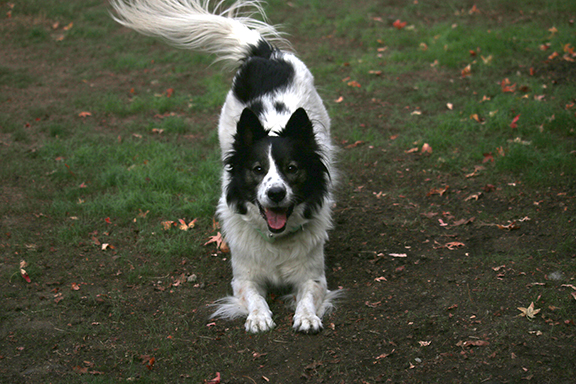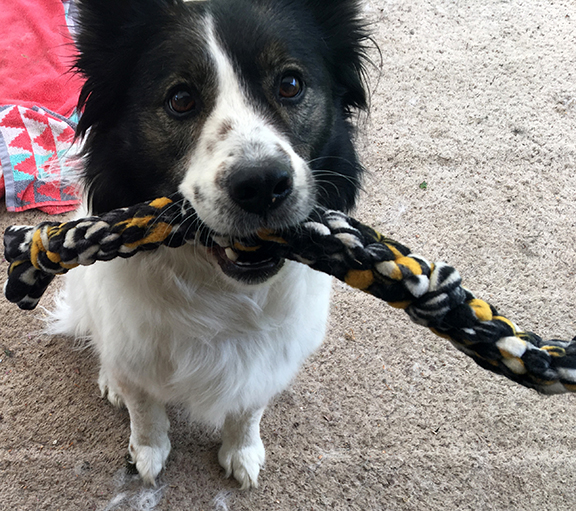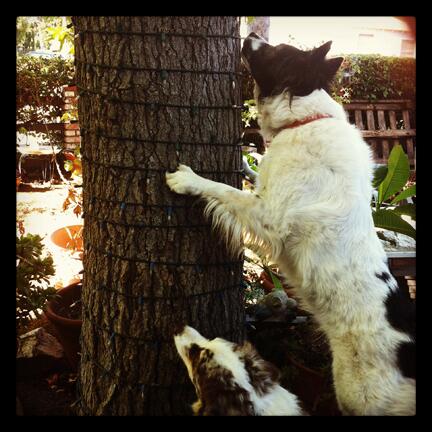
This week there have been a lot of conversations about rewards, timing of rewards, what types of rewards are effective, and how a lot of the answers to the above depend on how savvy the dog is. Intertwined in these conversations is always, “When can I stop using treats?” This question always vexes me. For those that use aversive training methods, no one ever asks, “When can I stop correcting and yanking?”
The real underlying question is, “When is my dog trained?” This question is really about expectations. “At what point can I get angry if my dog ‘knows’ a behavior but doesn’t comply?” I thought about this question as I sat in the Animal Hospital this week waiting for my dog. Shira had vomited all night, wasn’t eating and didn’t even run to the window when a cat appeared in the yard. She definitely wasn’t feeling well, so off we went to the Veterinarian. She hopped up on the scale when I asked, stayed there when I asked, hopped off when I asked, but didn’t sit when I went to the desk to sign us in. The dog next to us didn’t sit either. The difference between the two dogs was in what the owners did next.
Shira is 10 years old and knows how to sit. Her failure to sit on cue was communication, not obstinance. It turns out she has a rather bad urinary tract infection and upset tummy, certainly conditions that could make sitting uncomfortable. I simply looked at her and said “Okay,” which is my way of telling her I’d read her communication and nothing else was expected from her.
Unfortunately the same can not be said for the other owner. It was horrible to watch the butt pushing, leash yanking, body shoving and yelling from the woman with the other dog. The problem was, she expected her dog to sit, and when he didn’t, she got angry and embarrassed. It didn’t seem to matter that the dog was in a Vet’s office and obviously there for a reason. Or, maybe that was part of the reason. While no one in the office really cared whether her dog sat or not, there is a certain amount of perceived peer pressure to having a compliant dog, particularly around other dog owners.
So, at what point is your dog “trained?” For me, that point is when there is a 90% compliance to the cue under distracting conditions in any location. The problem with this definition is it takes a lot of time and effort to get there. Training your dog to sit with a 90% compliance rate in the home, yard and at class discounts a huge amount of other environments your dog may find themselves in. The Vet’s office is one, and one that they probably (or hopefully,) don’t visit very often. Even in familiar environments there can be novel changes. The squirrel across the street comes into my yard a few times a year. This means I only get a few training opportunities to work with squirrels, so I don’t expect perfection when the chattering, little, furry creature is in the tree.
Going back to the original question at hand, it’s time to save dogs and their owners a lot of angst, frustration and embarrassment. Your dog is never fully trained. There will be times when there will be a new environment or something the dog has never encountered that will be so stimulating your dog will blow you off. The point is not that the dog failed, but your actions in response to that failure. Getting frustrated with your dog bypasses a true learning moment for both of you. Is your dog telling you they are ill or injured? Or are they saying, “This is all new and I don’t know what to do!” If it’s the latter, seize the moment and teach. If you’re worried about peer pressure, there is nothing that screams “Good Dog Parent,” more than an attentive and thoughtful owner who works to make their dog more comfortable.




